Rabbits have always been one of the top choices for farmers to raise, thanks to their rapid growth rate, protein-enriched meat, and high reproduction rate.
Although their fur is soft and fluffy to the touch, the farm owners or homesteaders often prefer to grow them for what is inside: the meat.
While rearing a rabbit for meat, there are certain things you must consider, the main being the meat-bone ratio.
Let me delve down into the details and look at the 20 best rabbits for meat.
1. New Zealand White Rabbit
These soft white-furred rabbits have a muscular and broad build, upright, pointy ears, and distinct red eyes.

Contrary to their name, they did not originate from New Zealand but from California.
With about 72% body weight, 91% body length, 95% femoral length, and 94% tibial length in 16 weeks, an adult New Zealand White Rabbit weighs 9-12 lbs when fully grown.
However, I do not prefer waiting that long for meat as these rabbits reach butchering age at about 8 to 12 weeks.
The males of these rabbits reach their sexual maturity at 6-9 months, while females take 5-8 months for the same. The typical lifespan for these rabbits is usually 5-8 years.
With about 50-60% of dress rate, the New Zealand white rabbits are one of the most preferred breeds for meat.
2. Californian Rabbit
With dark markings on ears, nose, and legs, the Californian Rabbits are your average black and white breeds.
These breeds are also muscular, with wide foreheads and necks that are almost invisible. Californian Rabbits, also known as California White, originated from Southern California.
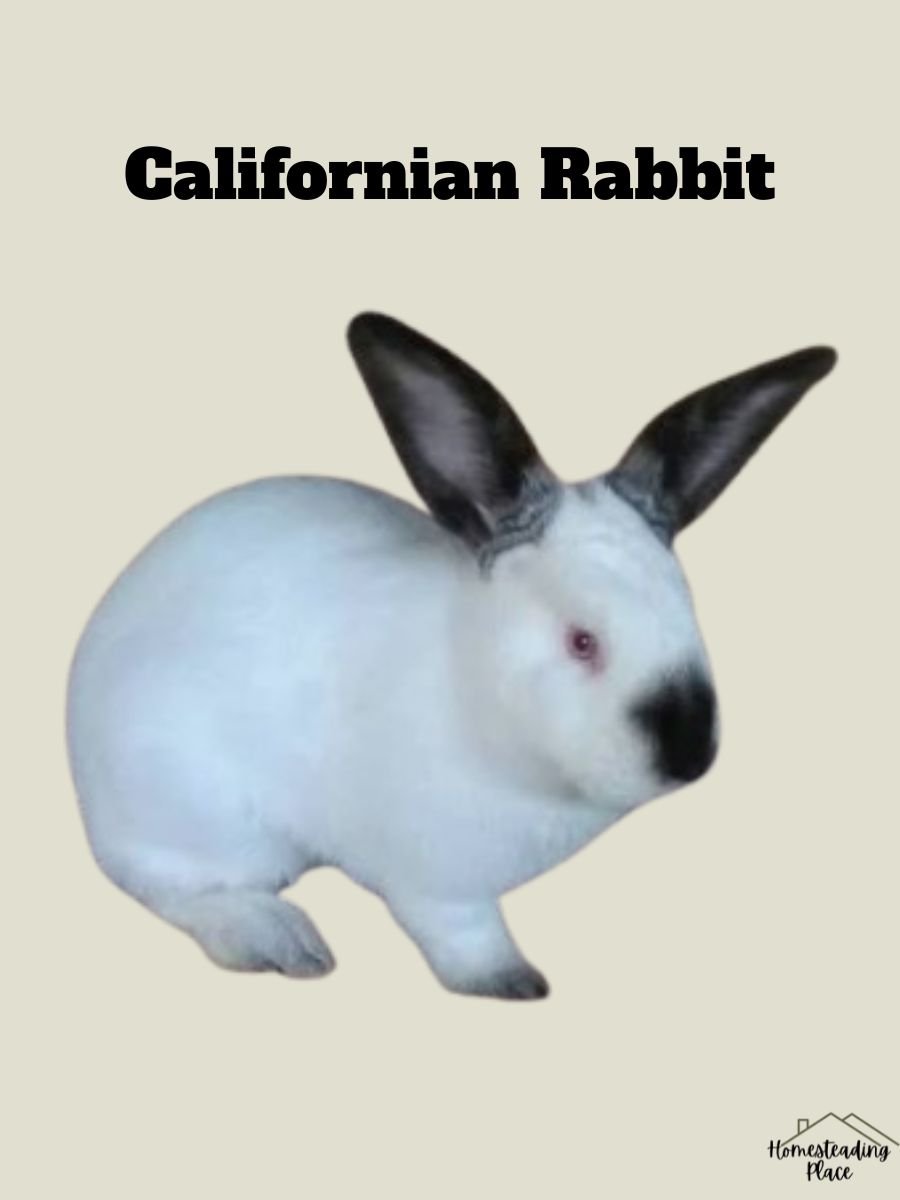
Weighing 8-10 lbs when adult, these rabbits reach half of their weight in about 10 weeks.
They are ready for butchering in about 3-4 months when the rabbits reach about 5-5.5 lbs in weight.
These rabbits, with a calm temperament and unique coloring, are perfect for meat with a 60-65% dress-out rate.
3. Champagne d’Argent
Champagne d’Argent, or the Argenté rabbit, are famous for their color-changing nature. At birth, these rabbits are pitch black, with only a white/silver star on their forehead.
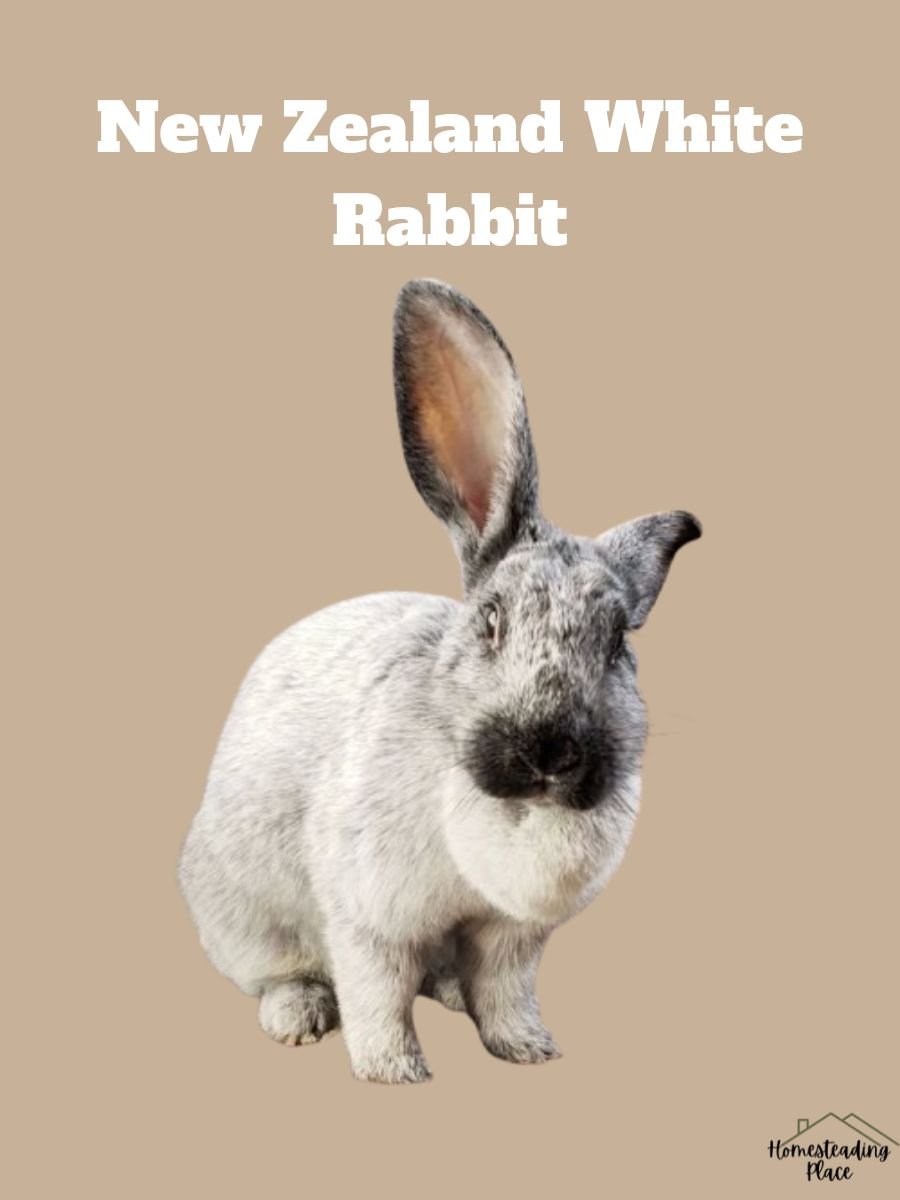
At around 4 weeks, these rabbits start turning silver, starting from their feet, nose, and eyelashes.
However, at 12 weeks, they turn full silver with only a hat-like pattern in the head remaining black.
A mature Argenté rabbit grows to be about 9-12 lbs in weight and takes about 6 months to reach that weight. Like most other breeds, I like waiting about 2-3 months till they reach about 5-6 pounds before I decide to butcher them for meat.
Also famous as good moms, these rabbits provide a dress-out rate of 60-65%.
4. Silver Fox Rabbit
One of the unique rabbit breeds, the Silver Fox Rabbit, was developed by Walter B. Garland of North Canton, Ohio.
These rabbits are usually black and blue with silver and white-tipped ‘stand-up’ furs.
However, other colors like lilac, white, and chocolate can also be found. These rabbits are popular for their furs and are classified into two varieties: underfur and guard hair.
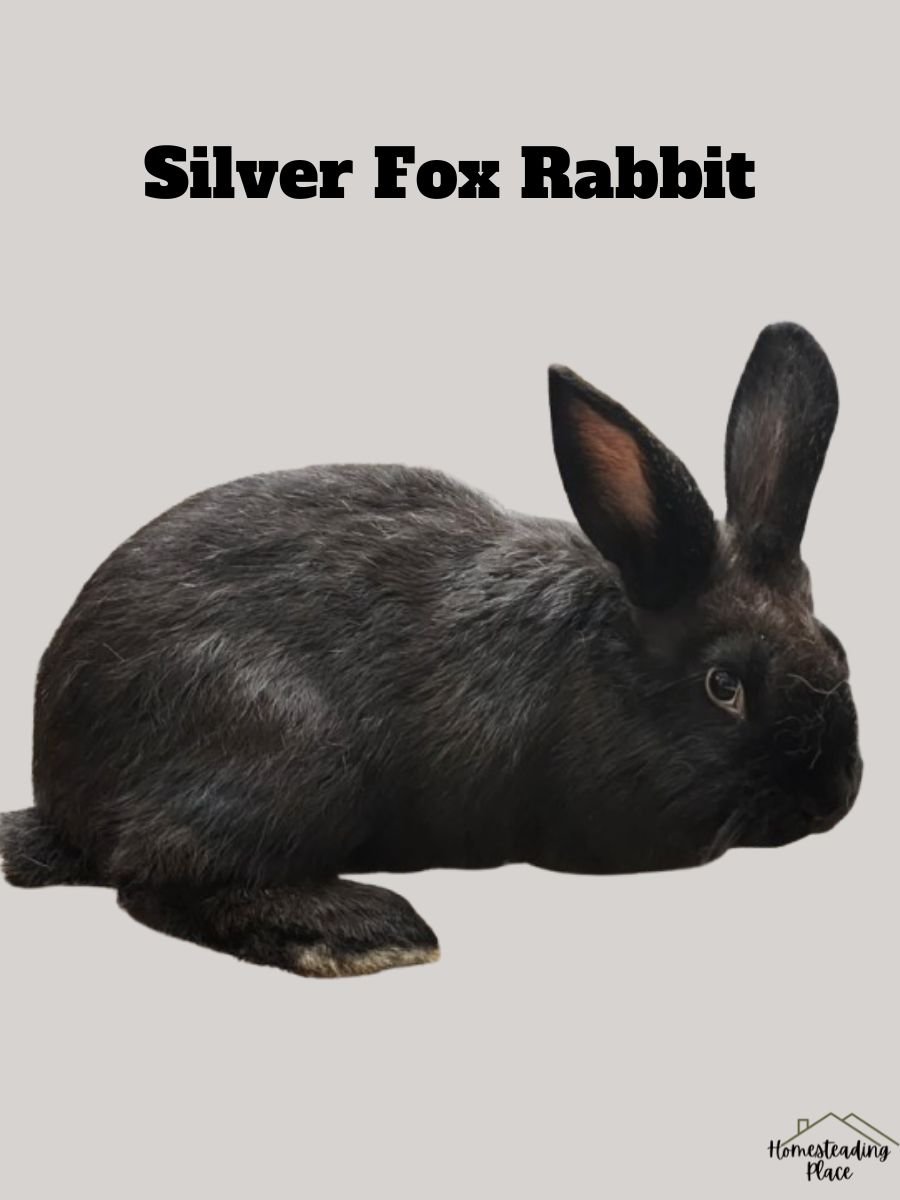
By the age of about 8-9 months, the rabbits reach their sexual maturity and weigh about 9-12 lbs.
If you want to rear them for butchering, you might have to wait for around 3-4 months; that’s when their meat percentage is about 65%.
5. American Chinchilla Rabbit
One of the low-maintenance coated rabbits, American Chinchillas, were bred for a coat that resembles their namesake, a chinchilla.
These rabbits are usually of white, black, and gray color, with some showing a bluish tint. Their fluffy tails are round and have a white underside.

They reach their maturity by the age of 7-8 months and weigh around 9-12 lbs then. However, they are ready for butchering when they reach 4-5 months.
These rabbits are of a gentle and docile nature and provide good dress out and meat-to-bone ratio.
6. Rex Rabbit
Popular for their medium build and weird face, Rex rabbits have upright ears, strong but small feet, and broad heads.
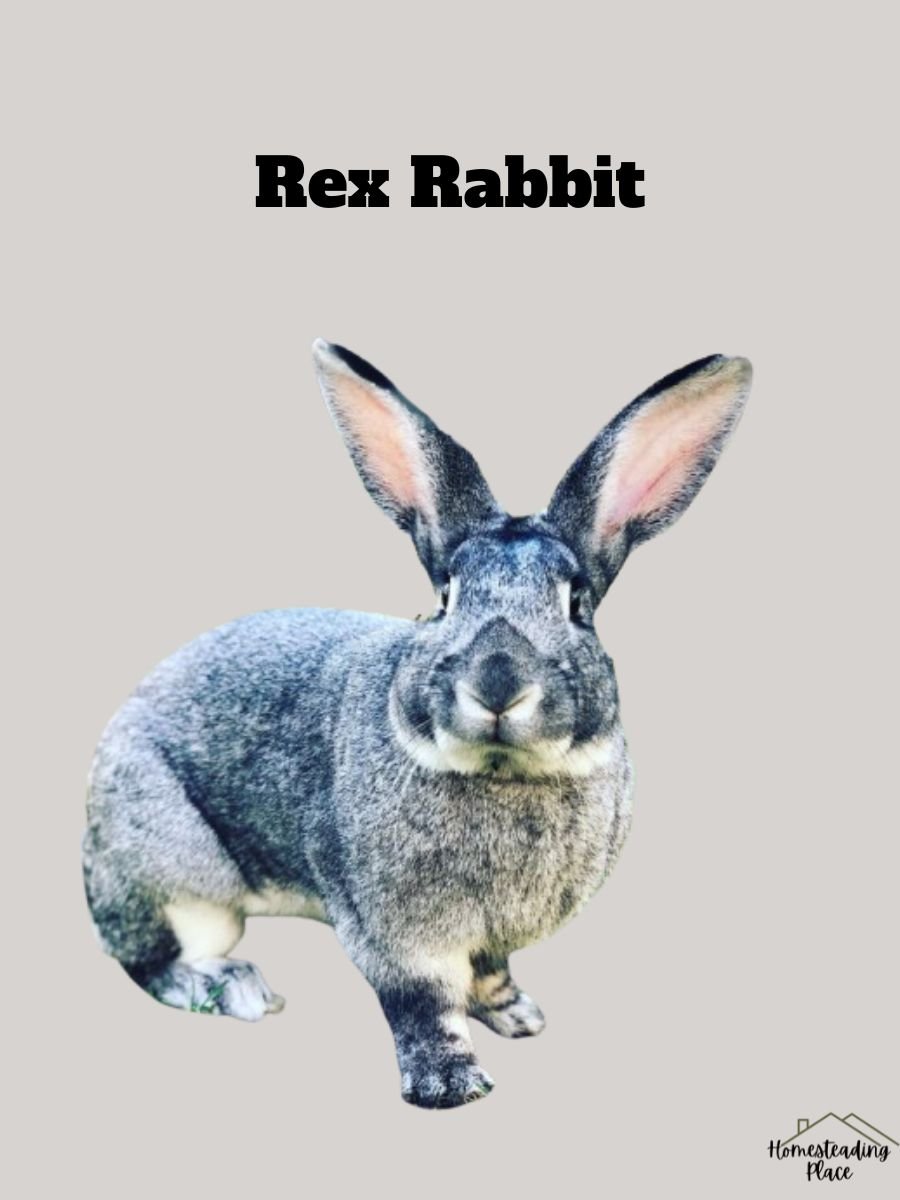
These rabbits appear in a variety of colors and have guard hair and undercoats of similar length.
Rex rabbits reach sexual maturity at the age of about 6 months and have an average weight of around 7.5 to 10.5 lbs.
The best time to butcher these rabbits for their meat is around 4-6 months, but I prefer to let their hide thicken and mature a little.
These rabbits typically have a dress-out rate of 60-65%.
7. Satin Rabbit
The Satin rabbits glitter in the sun, thanks to their soft, satiny coats made of hollow, luminous hair shafts. They have a muscular and long body with long ears.

The UK variants weigh around 6-8 lbs body, while their US counterparts have a weight ranging from 8 to 11 lbs.
With a fragile body, they can live up to 5 years, expect a few, and reach sexual maturity at the age of 4 to 9 months.
Their butchering age might differ according to the desire and market. Fryers are butchered at around 2 to 3 months, roasters before 6 months, and stewers after they cross the age of 6 months.
I personally prefer satin rabbits for their high meat-to-bone ratio, as 4 pounds of pellets make one pound of rabbit.
8. Beveren Rabbit
The rare Beveren rabbit is mandolin shaped with a dense and glossy coat with long rollback fur. They usually come in three recognized colors: solid blue, blue-eyes white, and solid black.
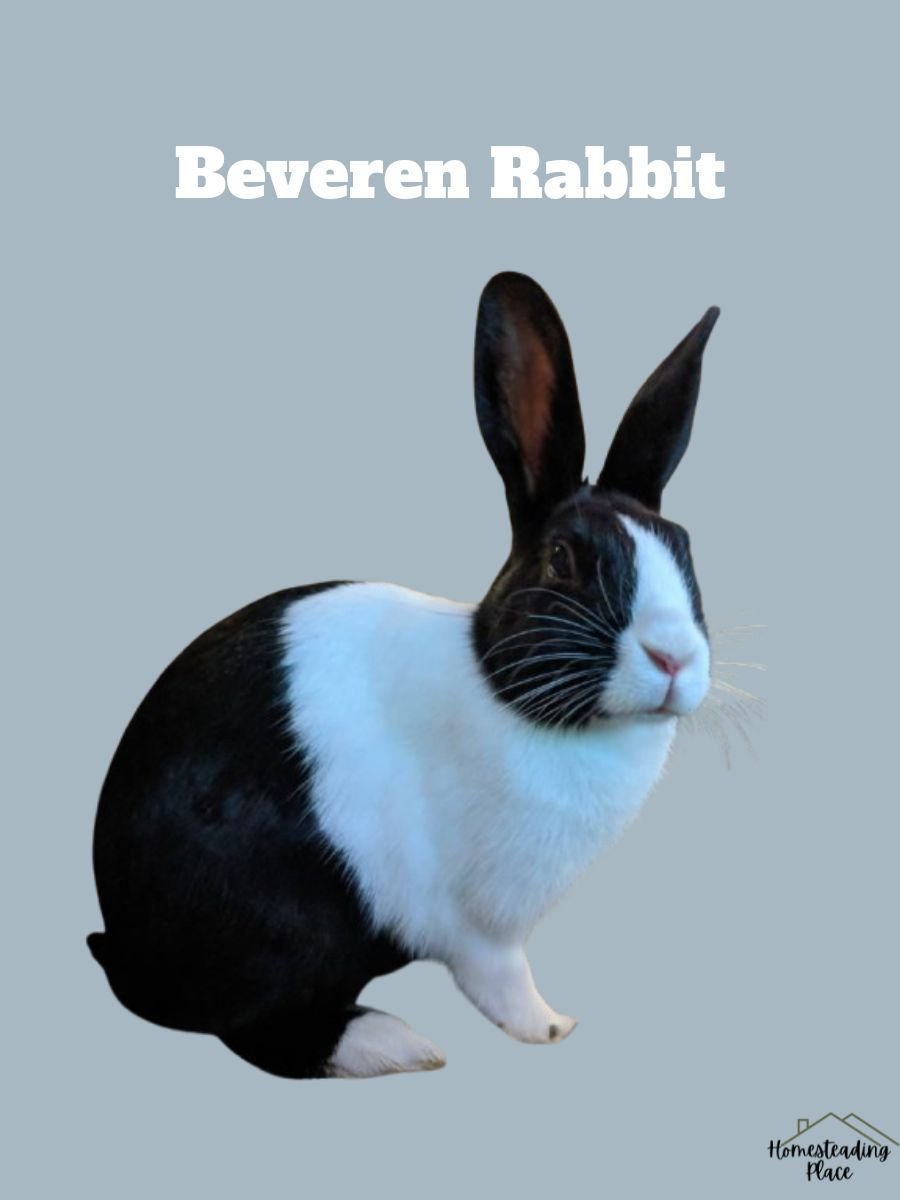
Beveren rabbits are multipurpose as they are used for their meat and fur, and their mature weight ranges from 8 to 12 lbs.
These rabbits reach their sexual maturity at the age of about 4-5 months, and they fully grow at the age of 6-8 months.
For butchering, I prefer these rabbits to be at least 5 months old and cannot wait for much because, after 6 months, they lose their tenderness.
Beveren rabbits are usually considered smart and gentle, and they are one of the best for meat, with a high meat-to-bone ratio.
9. Cinnamon Rabbit
Cinnamon rabbits were accidentally bred in 1962 by the Houseman Family and named so because of the color of their coat.
They have medium-length hair and round faces and are a mixture of many colors. These multipurpose rabbits can also be your “show-off” bunnies, as they are considered great pets.

Cinnamon rabbits can live till they reach about 9 years and can grow up to weigh up to 12 lbs.
They become sexually mature by the time they reach 5-6 months and can be butchered once they reach 4-5 months.
These rabbits are becoming very popular as household pets and are considered good meat thanks to their easy maintenance.
10. Palomino Rabbit
First bred in the US by Mark Youngs of the Lone Pine Rabbitry, Palomino rabbits are famous for their distinct color.
With larger bodies, they are similar to the New Zealand rabbit and come in two primary colors: golden and lynx. They weigh around 8-12 lbs and reach maturity quickly.
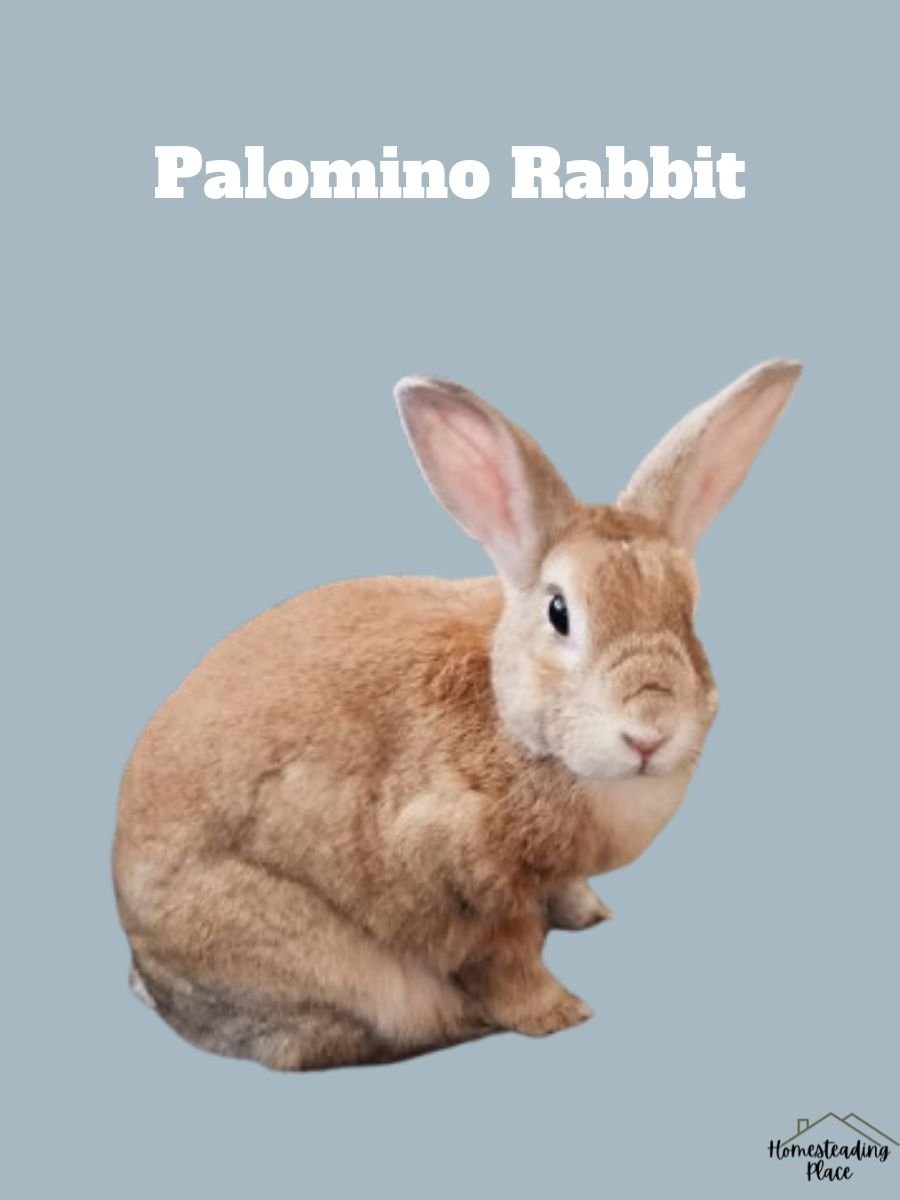
I personally prefer to let the rabbits reach the weight of about 5 lbs before butchering them.
That way, their meat gets all the tenderness it needs.
Palomino rabbits usually provide a 55-65% dress rate and are particularly famous for their greater meat-to-bone ratio.
11. Harlequin Rabbit
Considered one of the best parents out there, Harlequin rabbits are generally famous for being colorful and having beautiful markings.
They have round bodies, broad heads, and medium-length and erect ears with soft coats.
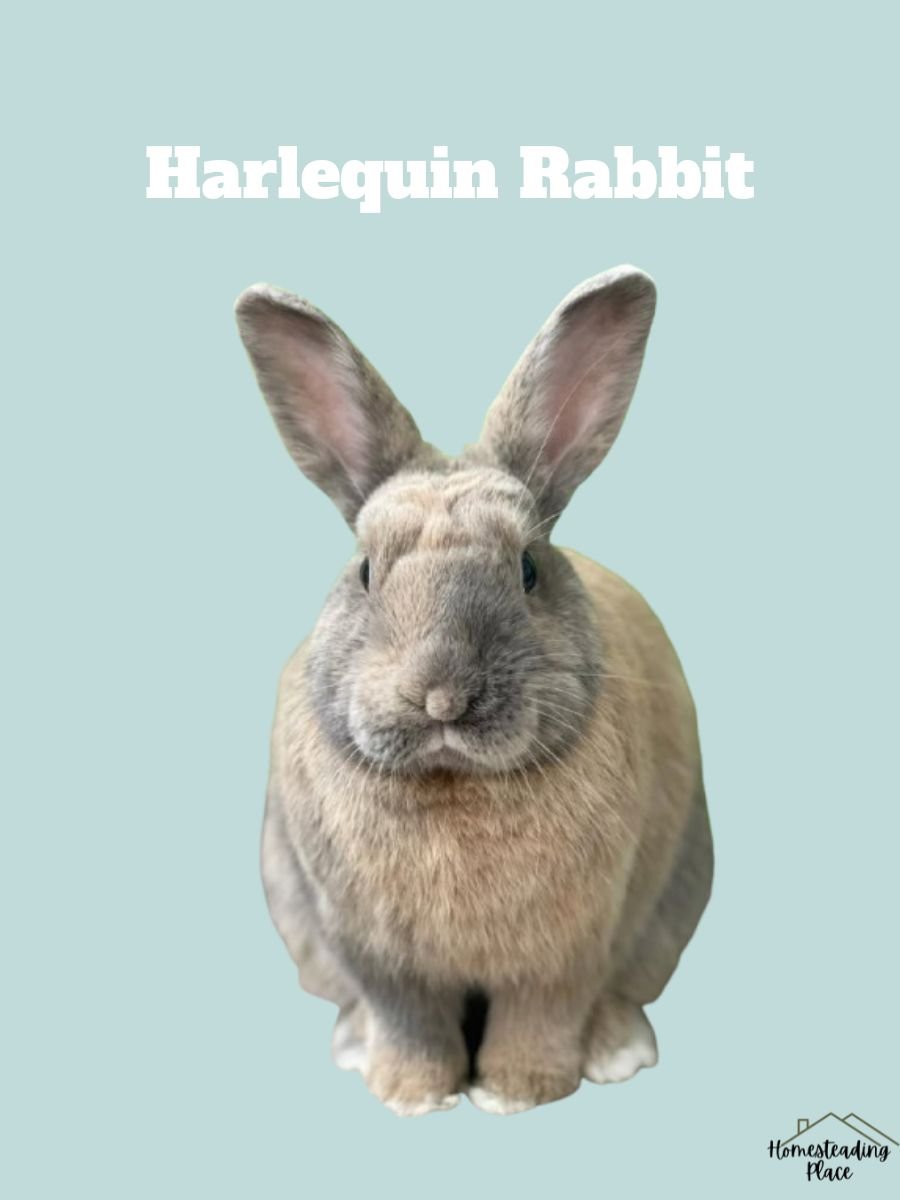
With a lifespan ranging from 5 to 10 years, they generally weigh between 6.5 to 9.5 lbs.
We can consider them grown by the time they cross the 4-5 months mark; however, I suggest butchering them when they reach 4 months.
Like most other breeds, these rabbits have a dress-out rate of 50-60%.
12. Florida White
One of the smallest rabbits in this list, Florida White are usually reared for laboratory purposes and smaller meat production.
Similar to their name, these rabbits have flyback white furs and red eyes. They have round, compact bodies and their necks are short.
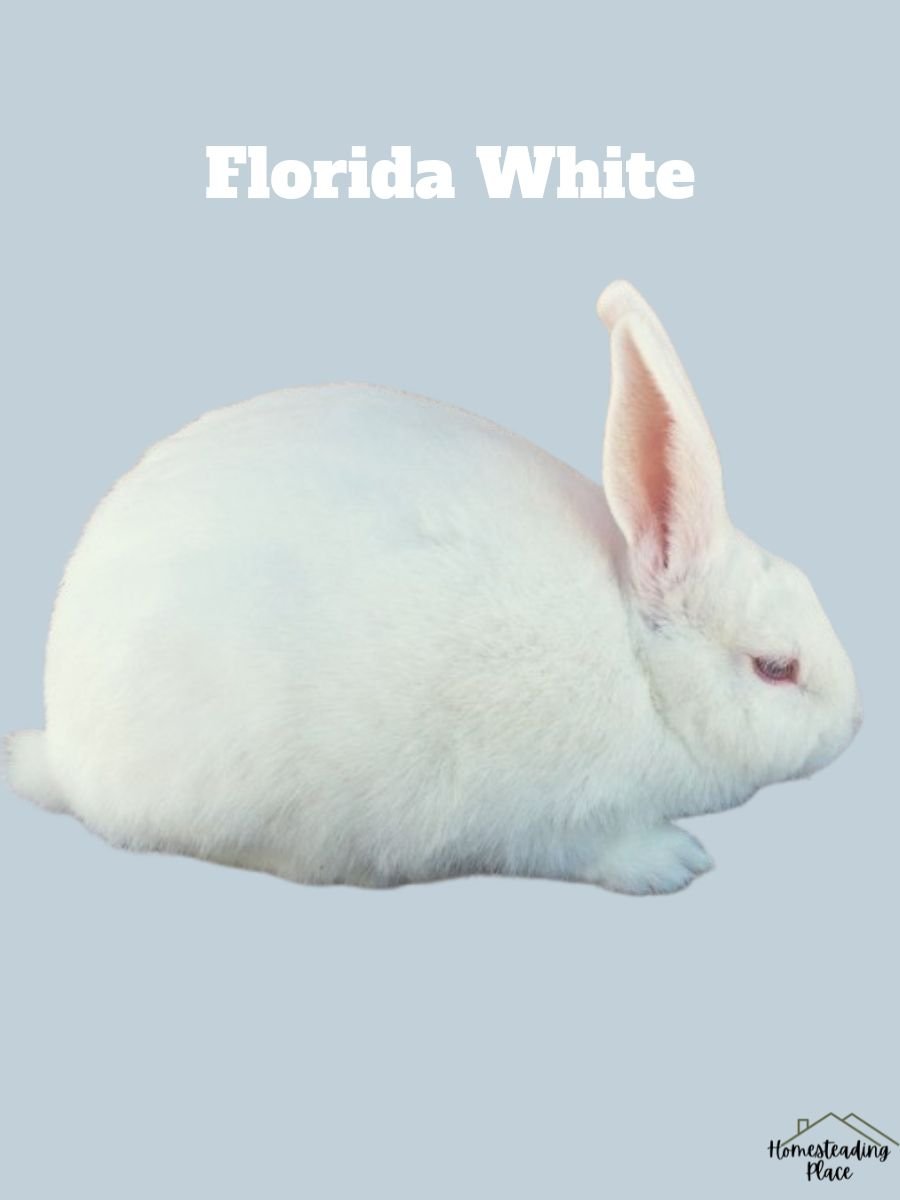
These small rabbits weigh around 4 to 6 lbs and have a lifespan ranging from 5 to 8 years. The best time to butcher the Florida White is when they reach about 3 months old and around 4-5lbs.
That is the time they need to be sexually mature, so plan accordingly.
The compact rabbits have a small head, small limbs, and small bones, which keep their meat-to-bone ratio at 65%.
If you’re only a beginner, you need to know the pros and cons of rabbits before owning them.
Others
13. Flemish Giant Rabbit
14. American Blue Rabbit
15. Creme de Argent
16. French Lop Rabbit
17. English Lop Rabbit
18. Argente Rabbit
19. Altex Rabbit
20. Blanc de Hotot Rabbit
Final Thoughts
I often prefer New Zealands and Californians, and I recommend the same if you’re a beginner.
But you need to be picky about the best and right rabbits based on availability, rabbit size, growth rate, temperament, mothering and litter size, and hardiness.
Different rabbits also cost differently, so inspect your budget, too.
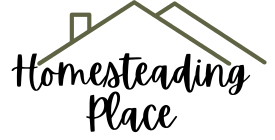
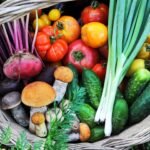

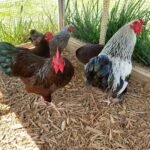
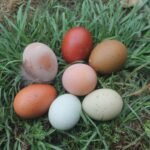


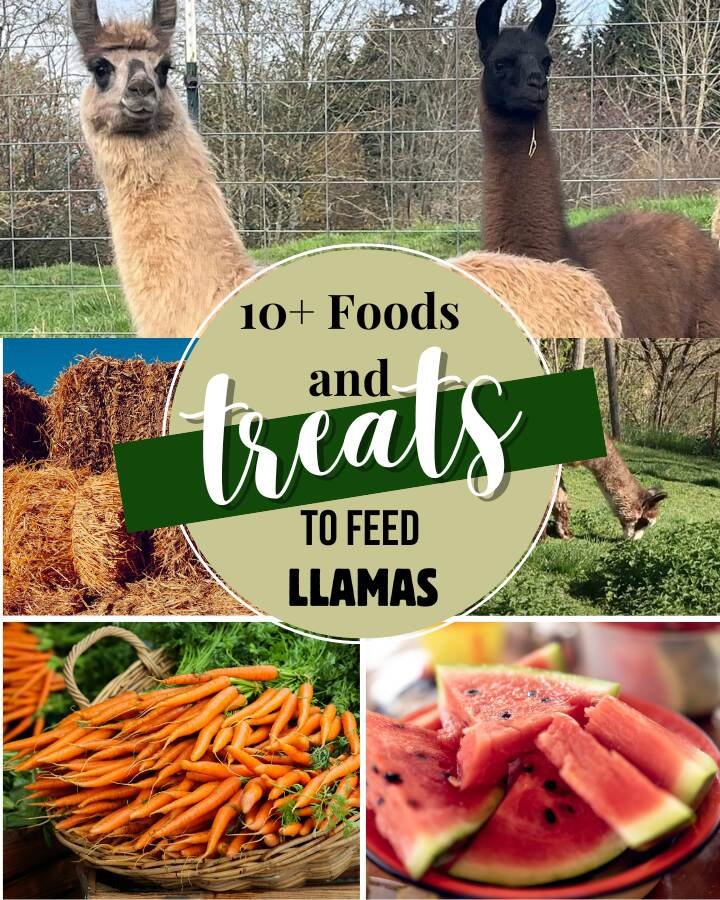
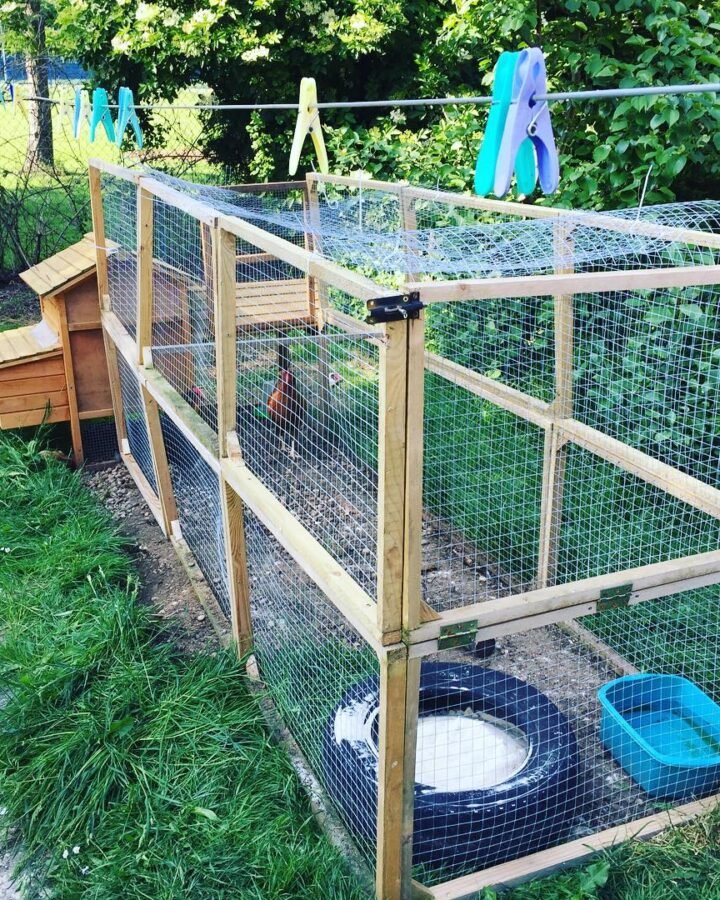

Leave a Reply